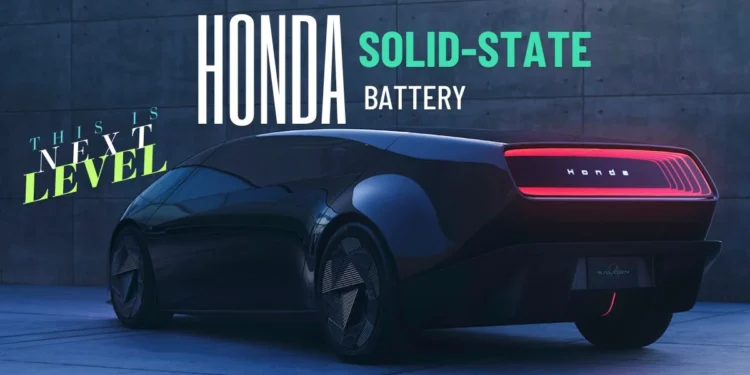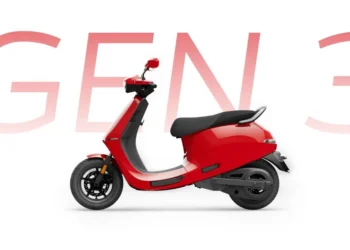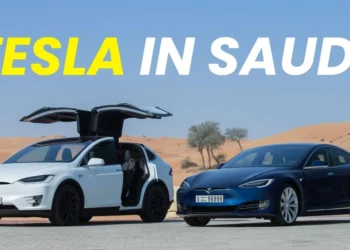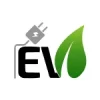Honda is driving the future of electric vehicles (EVs) with its ambitious plan to use solid-state battery technology, aimed at doubling the driving range of its EVs by the late 2020s. This breakthrough technology could change our thoughts about electric cars, promising longer range, faster charging times, and better efficiency. With significant investments and partnerships, Honda is on track to lead the charge in the EV market. In this article, we will explore Honda’s solid-state battery goals, their potential impact, and what this means for the future of mobility.
Table of Contents
What is a Honda Solid-State Battery?

Honda solid-state batteries replace traditional lithium-ion liquid batteries with solid electrolytes. This technology promises significant advantages over current battery types, including increased energy density, faster charging times, and greater safety. Using a solid electrolyte, Honda’s batteries are designed to enhance the efficiency of electric vehicles, reducing both their size and weight while delivering higher power outputs.
Key Benefits of Honda Solid-State Battery
Here are the major benefits Honda expects from its solid-state battery technology:
- Doubling EV Range: One of the most exciting features of Honda’s solid-state battery is its ability to double the driving range of EVs. By the end of this decade, Honda solid-state batteries will provide twice the range compared to conventional lithium-ion batteries.
- Enhanced Safety: Solid-state batteries are safer due to their non-flammable electrolyte, significantly reducing the risk of fires that can occur with liquid-based lithium-ion batteries.
- Cost-Effectiveness: Honda plans to cut battery costs by 25%, making electric vehicles more affordable in the long run.
- Faster Charging Times: The new batteries allow for faster recharging, enabling drivers to get back on the road more quickly.
Honda’s Vision for the Future with Solid-State Battery
Honda is not only working on improving battery technology but is also preparing for large-scale production. The company has set up a pilot production line in Tochigi, Japan, where it will refine the manufacturing processes for these solid-state batteries. This line, set to begin operations in January 2025, will focus on optimizing cell production for cost efficiency, speed, and quality. The facility has received a substantial investment of 43 billion yen (approximately $277 million), with nearly half of the funding provided by the Japanese government.
Key Production Goals for Honda’s Solid-State Batteries:
- Efficiency Improvements: Honda plans to make battery production three times faster using continuous inline mixing, which will reduce the time required to manufacture each cell.
- Material Innovation: Honda is testing various materials and processes to enhance the performance of their solid-state batteries.
- Mass Production Readiness: By the second half of the 2020s, Honda plans to bring solid-state batteries to mass production.
- Increase Energy Density: Honda aims to significantly increase the energy density of their batteries, thereby improving vehicle range.
- Cost Reduction: Honda’s goal is to cut battery costs by 25% within the next five years, contributing to more affordable EV options.
CEO’s Vision for the Future
Keiji Otsu, the President of Honda R&D, has made it clear that solid-state battery technology is key to the future of EVs. He shared, “It’s a game-changer of the EV era.” This statement highlights the immense potential of Honda solid-state batteries in reshaping the electric vehicle market.
The Path to 2040
By 2040, Honda expects to achieve more than a 2.5-fold increase in driving range for its electric vehicles, thanks to its solid-state battery technology. This will not only transform the EV market but also support the global transition to sustainable transportation.
Collaboration with Industry Leaders
Honda’s efforts are part of a larger global push to develop solid-state battery technology. Strategic partnerships with companies like Nissan and Toyota are essential to Honda’s success in this venture.
Nissan is also working on its solid-state battery technology, with plans to start production in 2025. This collaboration presents a promising opportunity for joint material procurement and technology sharing, as mentioned by Otsu: “There may be areas where we can work together.” The collaboration between major automotive companies is crucial for accelerating the transition to more efficient and sustainable EVs.
Industry Competition: Who Else Is Developing Solid-State Batteries?
Honda is not alone in its pursuit of solid-state battery technology. Several key players in the automotive and battery industries are actively working on similar advancements. Some notable competitors include:
- Toyota: Aiming to commercialize solid-state batteries by 2027-2028.
- Nissan: Set to launch its solid-state battery pilot line by March 2025.
- Volkswagen-backed QuantumScape: Developing solid-state batteries with a focus on energy density and rapid charging.
Despite the competition, Honda’s strategic partnerships, particularly with Nissan, could lead to joint efforts in materials procurement, which could enhance cost efficiency and production scalability.
Honda’s Demonstration Factory for Solid-State Batteries
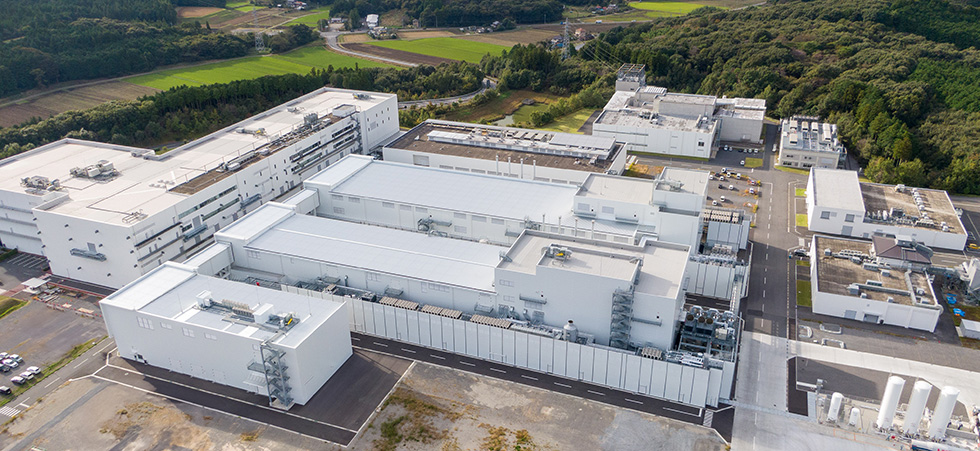
To showcase its capabilities, Honda has set up a 27,000-square-meter demo facility in Sakura City, Japan. This demonstration facility focuses on shortening the production time of solid-state batteries and testing new manufacturing processes. The site includes full-scale equipment spread across three buildings for cathode formation, anode formation, and electrolyte activation.
In particular, Honda is utilizing a continuous inline mixer that is three times faster than typical batch processing, which could significantly streamline battery production. The goal is to develop a mass production line for solid-state batteries in the second half of the 2020s.
The Future of Solid-State Batteries in the EV Industry
While Honda solid-state batteries hold great promise, there are still challenges ahead. Solid-state battery production is a complex process that requires advanced technologies and innovations in materials. However, Honda is committed to addressing these hurdles through continuous testing, research, and collaboration with industry partners.
The road to widespread adoption of solid-state batteries may take some time, but Honda’s early investment and leadership in this field will play a critical role in accelerating their development.
To learn more about Solid-State Li-Ion Batteries, click here.
FAQs
What is a solid-state battery?
A solid-state battery replaces the liquid electrolyte found in traditional lithium-ion batteries with a solid material, offering advantages like higher energy density, faster charging, and improved safety.
How will Honda’s solid-state battery impact EVs?
Honda’s solid-state battery promises to double the range of electric vehicles and reduce battery size, weight, and cost, making EVs more affordable and practical for consumers.
When will Honda start producing solid-state batteries?
Honda plans to begin mass production of its solid-state batteries in the second half of the 2020s, with a pilot line beginning operations in January 2025.
Will Honda collaborate with other companies on solid-state batteries?
Yes, Honda is open to collaboration with other companies like Nissan and Toyota, especially in areas like material procurement and technology sharing.
How much will Honda invest in solid-state battery development?
Honda has invested 43 billion yen ($277 million) in developing its solid-state battery technology, with nearly half of the funding coming from Japanese government subsidies.


